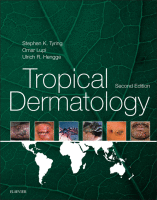Physical Address
304 North Cardinal St.
Dorchester Center, MA 02124

Introduction Bacterial sexually transmitted diseases (STDs) have become an important medical challenge worldwide, especially among the tropical countries. The ubiquitousness of STDs affects all nations and races, but is particularly evident in developing countries. Insufficient health-care centers, inadequate laboratory capabilities,…

Introduction Bartonella bacilliformis was described more than 100 years ago as the cause of Carrión disease (CD) but it remained a medical curiosity until the description of bacillary angiomatosis (BA) in the late 1980s. The genus Bartonella has received great…

Key Points Fever, history of tick bite / tick exposure. Signs and symptoms are non-specific. Macular or maculopapular rash in approximately 30% of patients with HME; 2–5% in cases of HGA. In HME cases, rash is more frequent in the pediatric population…

Key Point Rickettsiae are obligately intracellular, Gram-negative bacteria that are transmitted when arthropods feed on humans. An important clue to diagnosing rickettsial disease is the eschar that forms at the site of an arthropod bite. First-line therapy for rickettsial infection…

Tuberculosis Leninha Valerio do Nascimento Caroline Fattori Assed Saad Synonyms Tisic, scrofula Key Points Mycobacteria. Tuberculosis. Tuberculides. Introduction Tuberculosis is one of the oldest diseases on earth, and affects the lungs, lymphatic ganglia, bones, intestines, skin, and other organs. Most often there…

Key Points Pyodermas caused by Gram-positive cocci are a significant cause of morbidity and comorbidity in developing countries. Antibiotic resistance, empiric and inadequate therapy, and cost of new antibiotics impede efforts to reduce prevalence of cutaneous skin infections. Toxin production…

Key Points Infections with bacteria of the species Neisseria meningitidis are the most common cause of community-acquired bacterial meningitis in young adults. The disease may occur in seasonal epidemics and it affects both children and adults worldwide. Severe flu-like symptoms…

Introduction Without any doubt systemic fungal infections constitute public health and economic problems. Nowhere is this clearer than in tropical countries where these diseases are endemic, or at least have a high incidence. The World Health Organization (WHO) has acknowledged…

Introduction Subcutaneous mycoses are a group of fungal diseases produced by a heterogeneous group of fungi that infect the skin, subcutaneous tissue, and in some cases the underlying tissues and organs. The causative agents are commonly found in the soil,…

Introduction Fungal disease involving human keratinized tissue may be caused by dermatophytes, non-dermatophytic fungi, or a combination of both. Superficial disease caused by non-dermatophytes is limited to the stratum corneum, hair, or both. When fungi grow on the host, there…